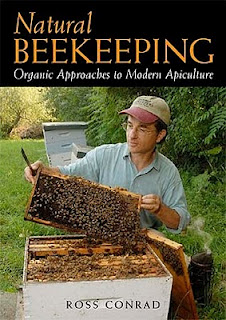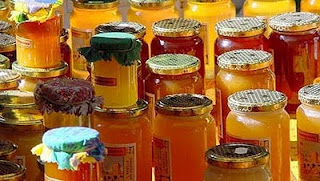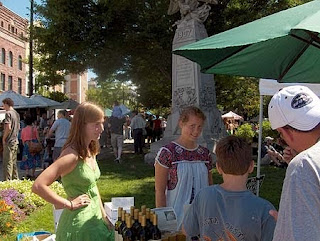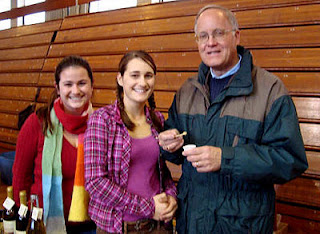More than a truce
Ellwire bee yard, St. Lawrence County, northern New York State – May 11, 2001
The snakes are everywhere today.
Big fat snakes with little ones by their sides. Pairs of smaller snakes under most of the bee hives. I am finally getting used to them.
Ellwire is consistently one of our best bee yards, and I love to come to this sacred place. Many of the colonies have already made 30 pounds of honey. This is a classic upstate bee yard where the plants have grown through successive generations and molded around the hives for over 50 years. The bees overwinter well here. The snakes come with the land.
On many of the days that I work here, I see over 40 snakes. We are used to each other now. They lie in the sun, and I work around them. They stick their tongues out at me and bob their heads. When I picked up the wood they are lying on and nudge them along, they hiss at me and slither away.
I used to jump and scream every time I saw a snake here; I was scared of them. Then four years ago, we made an agreement. I would not hurt them, and they do not bite me. It is a universal contract that extends beyond this land. This understanding also covers times when I am with other people and someone wants to kill a snake. I protect my friends.
Mice destroy a lot of bee equipment each year; they make their homes in boxes that are in storage in the bee yards, eating the comb and the wood. I used to get mad at the mice, they were the last creatures I ever harmed. Now I leave them alone, moving them along into grass when I find them. Snakes will take care of all of this as they eat the mice. Without the snakes, the damage would be unimaginable.
The bees are letting me know that it is time to stop working with them. They are barometers of the weather, coming home before it rains and indicating that they do not want their homes taken apart any more. They stick their abdomens in the air and fan alarm pheromones my way. At 6:12 PM the first rain drops start to fall, and with the soft rain continuing for the next day, the drought is over. We will now get a honey crop at Ellwire.
The snakes at Ellwire are protected from the rain, coiled under most every bee hive. We have come to a peace on this land. It is truly more than a truce.
Hawthorn for a failing heart
Hawthorn (various Crategus species) received an endorsement in another Ernst-and-friends metareview. The review included 14 trials, and focused on hawthorn’s ability to improve the maximum workload of the heart, and improve various cardiovascular markers during exercise-induced strain. The bottom line: hawthorn leaf and flower extract helps. A lot. Even if added to existing medication regimens.
Just to be clear, no new clinical research is coming out of this review. Rather, it attempts to collate existing studies and compare them using a common denominator. Further details on the data are below, but for now my opinion continues to be that hawthorn, either as a berry, a tasty jam, or as a leaf-and-flower extract (or tea), should always be considered as part of the protocol for cardiovascular weakness or imbalance. In fact, I might go further to say that most colorful berries would accomplish similar effects and that, in fact, a nice cocktail of all sorts of berry fruits is probably the best way to go for managing blood pressure, improving capillary integrity, and increasing the efficiency of the heart muscle. Eat well!
from the Blog of Guido Masé Clinical herbalist, herbal educator, garden steward, Montpelier, Vermont
Guido co-founded the Vermont Center for Intensive Herbalism, Montpelier, Vermont, which sponsors a Clinical Herbalist training program and the Family Herbalist training year.
Thank you for all of your support of the bees, plant medicine, and those that work in agriculture.
“In August, the bees are working on the clover family plants and goldenrod. We are starting to see the first of the aster flowers. The vegetables on the farm that need to be pollinated have already been visited by the bees. At this time, it is important to think about whether the bees will have enough food to get through the winter. It has been a cool, wet summer, and I suspect that the bees have not made as much food here as in previous seasons.”
Honey Gardens & raw honey on a national TV special – We are very excited to announce that the Food Network channel on cable and satellite is doing a documentary series entitled “My Life In Food”. One segment of the series is called Milk & Honey, and will be featuring Meriwether Hardie and Honey Gardens. The show is scheduled to be aired, Saturday, February 14 at 6:30 p.m. Please check your local listings for exact time and date.
Bee Learning Behavior Affected by Eating Toxin from GE Corn from the Organic Consumers Association
Jan. 7, 2009.
“One of the speculated contributors to this decline is transgenic crops and specifically those containing Bt proteins since these are insect-active toxins to which bees are exposed through various routes. In particular, bee larvae are exposed since they consume large quantities of pollen which they sometimes source from maize plants (Sabugosa-Madeira et al. 2007).” Pub. by the Foundation for Biotechnology Awareness and Education, Dec. 2008.
Honey Laundering: A sticky trail of intrigue and crime, from the Seattle (WA) Post-Intelligence
Dec. 30, 2008.
This story exposes how adulterated honey comes into the US, often from China, Vietnam, and other countries. Because of all of the antibiotics in Chinese honey, the importation of it has been restricted into the US. This article details how foreign honey from a restricted country will be brought to another country that is approved for importing to the US, have the paperwork altered, and then brought to the US.
You are joyfully invited to attend the 9th International Herb Symposium, Celebrating the Healing Power of Plants, June 19 -21, 2009 @ beautiful Wheaton College, Norton, Mass., with an extraordinary selection of Speakers from twelve countries, over 90 Workshops for all levels of interest and experience, and Herbal Intensives for in depth study, panel discussions & case studies. I will be sharing Jan Cannon’s film “Health & the Hive” and facilitating a workshop on marketing of plant medicine. We thank Rosemary Gladstar for organizing this special gathering. www.internationalherbsymposium.com

 the power of working together in community, and, like the bees, learn to rely upon each other once again. We can get through these tough times if we will only help each other out. By showing our love and providing for or sharing with each other, we provide for ourselves. When our community is doing well, we tend to do well, and when our community suffers, we don’t do as well.
the power of working together in community, and, like the bees, learn to rely upon each other once again. We can get through these tough times if we will only help each other out. By showing our love and providing for or sharing with each other, we provide for ourselves. When our community is doing well, we tend to do well, and when our community suffers, we don’t do as well.
